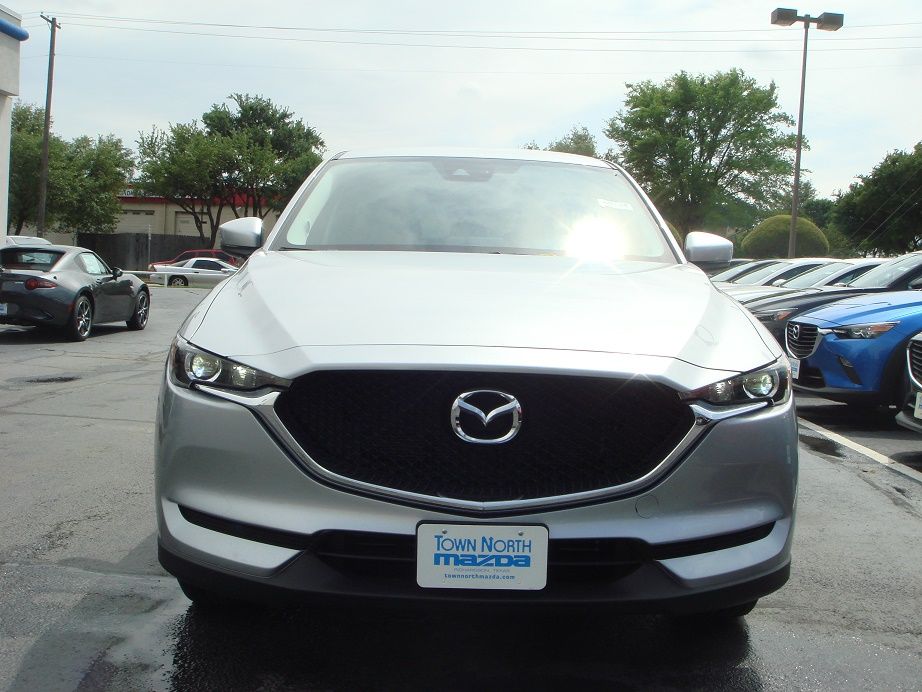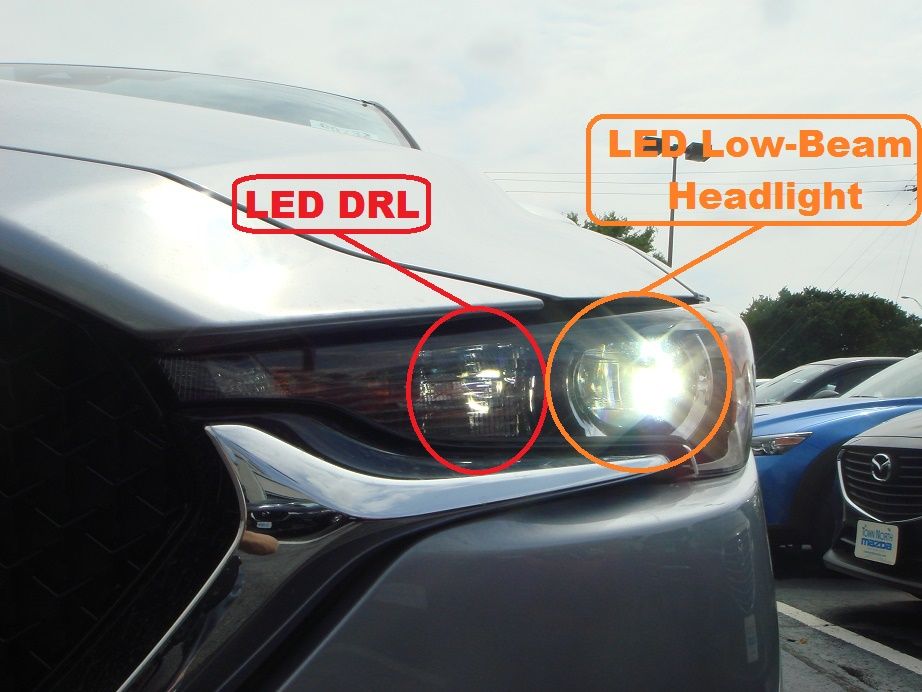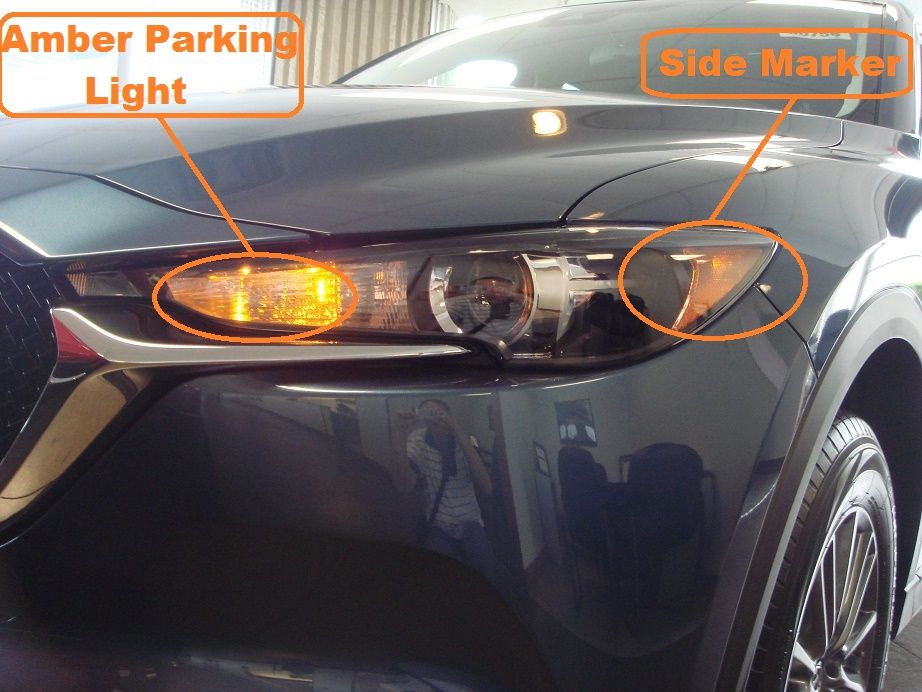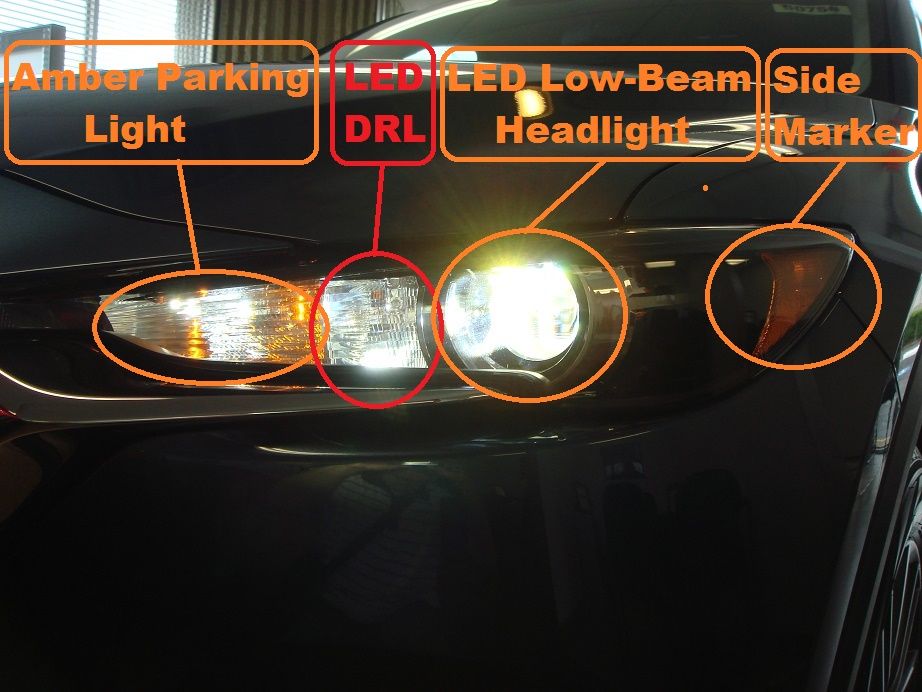- :
- Plano, Texas, USA
Since Scandinavia countries started using Daytime Running Lights in 1970's with amber parking lights due to low ambient light levels in the winter, it's getting more popular worldwide and also comes with some heated debates. For a while low-beam headlights were adopted as DRLs but eventually got phased out due to problems with glare and turn signal masking by full-intensity headlight DRLs. Many countries started limiting DRL's intensity hence car manufactures dumped low-beam headlights as DRLs, and used reduced-intensity high-beams as an alternative. The added benefit of this is the bulb life on low-beams which are used most often during the night can be prolonged as they're not on all the time. And apparently you missed the quotation marks for most of comments I posted. Those were comments from anti-DRL advocacy groups since GM started implement the low-beam DRLs in the 90's. Only the unquoted ones are my opinions.Dang son, you really have it out for these headlights! The reasoning in your post bothers me on so many levels. ***EDIT: directed at yrwei52
I don't own a 2017 CX-5 but based on short testing of DRLs from a CX-5 Touring, I didn't notice any reduced intensity on low-beam headlights for DRLs:FYI - The LED headlamp is NOT at full power in DRL mode. It is at reduced power. Pull up to a wall and play with the lights, you will see the difference in intensity against the wall. And IMO anyone complaining about glare due to a headlight being used as a DRL in the daytime is completely full of rubbish.
And here's the obversation from a 2017 CX-5 owner:Here are some pictures from 2017 CX-5 Touring showing whenever DRL function is on, both LED DRLs and LED low-beam headlights are simultaneously on! You can imagine how GT DRLs work by replacing Touring LED DRLs with GT's LED Signature DRLs.


Here's what the front lights look like when light switch is at parking light position without DRL function when car is in stationary:

Here's what the front lights look like when light switch is at headlight-on position without DRL function when car is in stationary:

Finally for 2017 CX-5 Touring the high-beam is from the same LED cell for the low beam in the projector, and use a shutter to control them like 2015 bi-xenon HID. For 2016 LED headlights we have a separate LED cell at inner side of the low beam LED dedicated for high beam only.
View attachment 216512 View attachment 216513 View attachment 216515 View attachment 216514
Most complaints here are not for glare, but the unnecessary strong LED low-beams drowning out the nice-looking LED Signature DRLs and turn signals. The low-beams aren't on with DRL mode on 1st-gen CX-5, and on 2nd-gen CX-5 in every other regions. Why do the Mazda North American Operations want the change only for the US customers? NHTSA hasn't made any regulation changes on DRLs.A little more testing.
Headlights set to auto
Daylight outside
Pull into garage (as we all now know, headlights are already on even though it is daylight)
Garage is darker than outside
Eventually (a few seconds) green indicator comes on by itself showing that headlights have now been turned on (tail lights and parking lights also come on)
Light intensity against the garage wall does not change
So, to me, headlights are at full intensity even during daylight hours.
The only thing the auto setting does is turn on your tail lights and parking lights and dim interior lights.
Ask people with anti-DRL advocacy groups they have plenty of reasons to tell you. The same in entire Europe Union including those countries that are the granddaddy of the the DRL, they all outlawed the headlights as DRLs in 2011!If a headlight can be used at night there is NO reason it can't be used during the day, and that's the bottom line.
Even in theory LED won't last forever. And most of time it's the other components failed first due to heat or quality. The headlight LED uses a lot more power than accent strip LED, which is generating a lot more heat and that is the major difference between the two. To see how long the LEDs even on accent strips can last on our CX-5 if you keep them on all the time, just see this thread:Then you argue about longevity of the headlight....
Headlight uses LEDs. Same technology as is in the "signature lighting" strips (in the top model) and individual DRL bulb in the lower model. What's the difference between using an LED in an accent strip vs an LED in a headlight housing with any DRL system needs to be on all the time and neither components are serviceable? None.... If the accent strips are used all the time and one goes out, the housing needs replaced. Same for the headlamp now. It's an unfortunate truth, but it is the price to pay for more advanced lighting.
Daytime running lights dim/flickering
With some section of accent strip DRLs flickering or failed at least I can live with it without replacing the expensive unit and pass our annual Texas state inspection. But if the LED headlights failed due to over-usage, you have no choice but replace it or you either get ticket or can't pass annual safety inspection. We simply don't need headlights with DRLs.
I'm not against DRLs. I'm against the low-beams been used as DRLs. Nobody uses low-beams as DRLs as it's unnecessary with new LED accent strips serving as Signature DRLs beautifully and nicely. Please name any one car model among all new cars selling in the US other than Mazda which is using low-beams as DRLs when it already have dedicated LED (or Signature accent strips) DRLs ⋯IMO, this is a ridiculous argument. You're saying school buses are complaining about trying to be safer? LMAO! Where is this coming from? You've gone from arguing that a DRL in a headlamp is bad to arguing that DRLs in general are bad. DRLs have been the law here in Canada since 1989, purely for safety reasons. From the exact same 14 year old report that you linked to are the figures the author used to advocate for the use of DRLs:
If the low-beams are not on with dedicated LED DRLs, this human errors can be mostly eliminated. And which way is safer? We don't need to agree everything Mazda designed and configured. Besides, this is not from Mazda itself, but from MNAO!If this happens it is the driver's fault, NOT the car's! There are other ways to know that headlamps are on or not at night time including, but not limited to: changes in dash illumination (either becomes illuminated, or if it is already illuminated it becomes dimmer), headlamp indicator in gauge cluster if gauges are always illuminated, the fact that whatever light projected forward from the car is not typically sufficient for night driving and the driver should recognize something isn't right.
Now we're talking. European Union Directive 2008/89/EC requires all passenger cars approved on or after 7 February 2011 in the EU to come equipped with DRLs. And functional piggybacking, such as operating the headlamps or front turn signals or fog lamps as DRLs, is not permitted. That's why we see so many Euro vehicles and any car models exporting to EU turn one side of DRLs off while the turn signal is on. Like the article you provided said, US has similar regulations for this but there're exceptions. That's why we see 1st-gen CX-5 configured the way without turning the DRL off while the same side of turn signal is blinking although they're from different light sources. MNAO can easily meet the first exception without the low-beam headlights on like the 1st-gen and the 2nd-gen in all other countries even if our 2017 CX-5 doesn't meet FMVSS Standard No. 108's 100mm spacing rule. This also saves Mazda's production cost without designing and manufacturing a special DRL system only for the US!The OP's original concern is visibility of the turn signal. The only relation to the DRL system at all is the fact that the DRL "signature" lighting illuminates the same area of the light housing at the same time of the turn signal, potentially reducing visibility of the turn signal.
If anything will come from the original concern in this thread it will be that Mazda devises a way to turn off the DRL adjacent the turn signal when the turn signal is turned activated which some other manufacturers already do. I'm not sure if that is a mandatory requirement due to a regulation somewhere or if that is voluntary (my assumption) but for whatever reason Mazda didn't have to do it so they didn't. If they had to do it to satisfy some regulations, it would've been done.
Here's a link explaining what I mean. Ironically this link also says why I believe the headlight itself is a part of the DRL system... because the headlight is the DRL (as it is brighter) and the lighting strips are the "signature lighting" that happen to work along side the DRL.
http://jalopnik.com/heres-why-modern-cars-turn-off-one-of-their-lights-when-1792394567
At least in the US where this article comes from, it appears that Federal Motor Vehicle Safety Standard 108 is what would require the DRL to be deactivated when the turn signal is activated.
Here's a specific requirement from that specification which applies to the CX-5.
I'm assuming as I don't have the headlight system output numbers, Mazda was allowed to use to keep the signature lighting strip / DRL illuminated next to the turn signal as one of the following exceptions applies to their design (at least in NA). The signature lighting isn't bright enough to be considered an issue, or the turn signal is bright enough compared to the DRL that it isn't considered an issue, as exemption C does not apply to the new CX-5's design:
I tend to believe that if you are in the US and you have concerns with the signature lighting / DRL / vs turn signal the above regulation is where you have to start arguing your case.
The luminous intensity of the DRL is not more than 2,600 cd at any location in the beam and the turn signal lamp meets 2.5 times the base front turn signal photometric requirements
BTW very nice article from your link, and sorry for the very long reply. (drinks)
